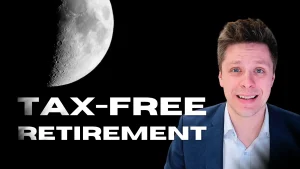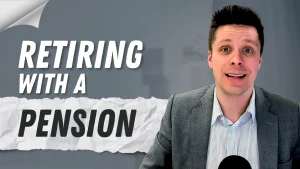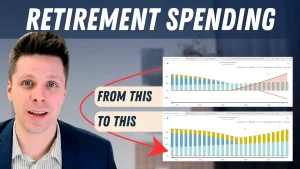[vc_row][vc_column][vc_video link=”https://youtu.be/SDGXOkQjgxE” css=”.vc_custom_1623956167399{padding-top: 20px !important;padding-bottom: 20px !important;}”][vc_column_text]
Rate of return vs timing of return
Many people believe that the rate of return they earn in their investment portfolio is the number one factor in determining the success of their retirement plan. Although essential, today I want to review why it’s even more important not to lose money, especially as you are entering retirement.
Comparing rates and timing
For our analysis, we’ll be doing a side-by-side comparison of two retirees. We have Wanda and Jim who both retired from Manitoba Hydro when they turned 65. At the beginning of every year, they each plan on withdrawing $75,000 from their retirement portfolios valued at $1,000,000.
Wanda’s investment returns fluctuate on a year-to-year basis, but after 10 years her retirement portfolio averages a return of 5.5%.
| Year | 1 | 2 | 3 | 4 | 5 | 6 | 7 | 8 | 9 | 10 |
| Return | 6% | 3% | 14% | 4% | 6% | 7% | -4% | 7% | 3% | 9% |
Jim’s investments go through more significant fluctuations, but he is still able to average a return of 6.5% after 10 years.
| Year | 1 | 2 | 3 | 4 | 5 | 6 | 7 | 8 | 9 | 10 |
| Return | -4% | 8% | -6% | 4% | 15% | 10% | 12% | 12% | -4% | 18% |
Which portfolio would you have rather had over the last 10 years? It seems evident that Jim has a better portfolio as he’s averaged a higher rate of return compared to Wanda, but when we look at how much money they have remaining, the results aren’t as obvious.
After 10 years, Wanda has just under $695,000 remaining, whereas Jim has less than $650,000.
How is this possible?
Shouldn’t Jim have more money remaining if his investments performed better? An important factor to consider is when those returns actually occurred. If you lost 10% in the first year you invested and then made 10% your second year, you would think that you made your money back because your average return was 0%.
However, this is not the case. If you had a $100,000 and you lost 10%, your portfolio would fall to $90,000. If you made 10% the following year your account would only increase by $9,000 as you only made 10% on the remaining $90,000. After two years, your portfolio would be worth $99,000 even though your investment returns have been 0%. Whenever you experience a loss in your portfolio, you need a larger gain to allow you to break even.
If we look at Wanda’s and Jim’s individual returns closely, we’ll see that Wanda begins her retirement with a few good years before she experiences her first decline in her seventh year of retirement. Jim, on the other hand, has a bad start, which lowers the amount of capital he has remaining. This problem is compounded by the fact that Jim is withdrawing from his portfolio when his investments are down. Even with Jim’s higher returns starting in year five, it is not enough to catch up to Wanda’s steadier portfolio.
As we’ve seen, your rate of return isn’t as important once you begin withdrawing funds from your retirement portfolio. Stay tuned for my next video where we’ll go over how to build your portfolio to avoid this issue.
[/vc_column_text][/vc_column][/vc_row]





